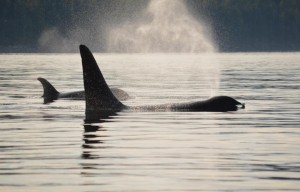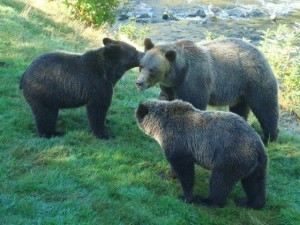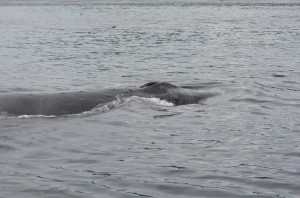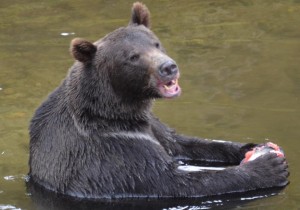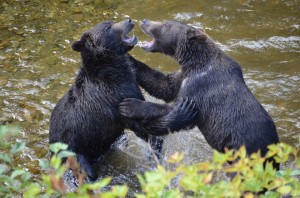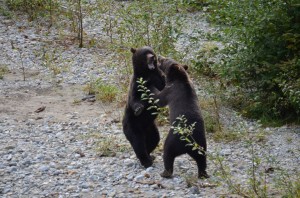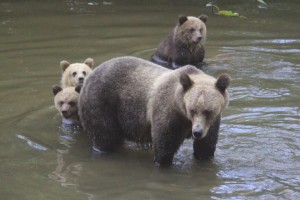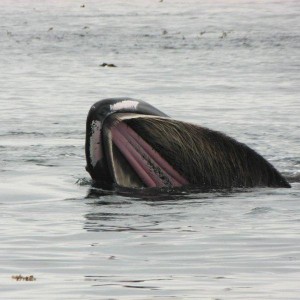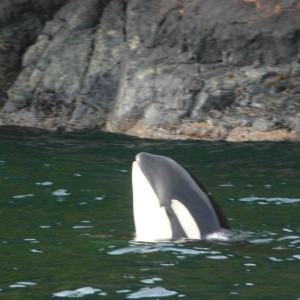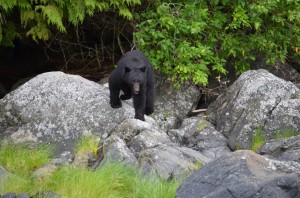
The first day / evening in the lodge involves an hour plus wildlife tour.
This may occur before or after dinner depending on the height of the tide as it is hard to find a black bear on the beach if there is no beach. It is a local tour that familiarizes guests with the boats, the guides and the area around the lodge. The black bear that frequent the shore are less than half the size of the grizzlies mainly because they do not have access to the salmon rivers, which are controlled by the grizzlies. The best way to judge if the black bear is a big bear is the size of its ears in relation to the head. Small Bears: Will have a small, narrow head, almost dog like. Their ears will appear to be much larger and defined. Almost like “Mickey Mouse” is a common description. Big Bears: Will have a very large, blocky looking head. Their ears will look small, and almost off to the side of their skull a little.
